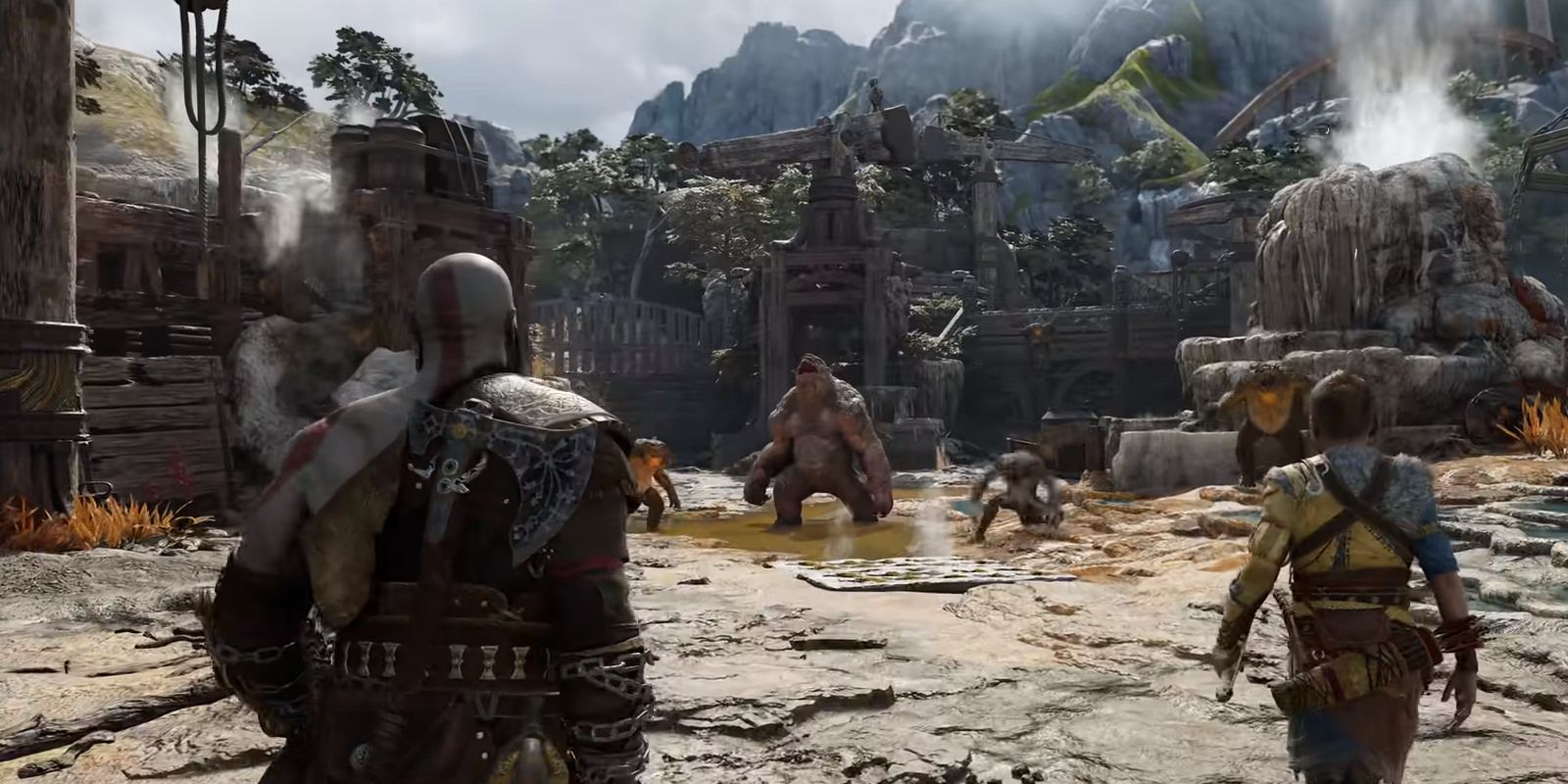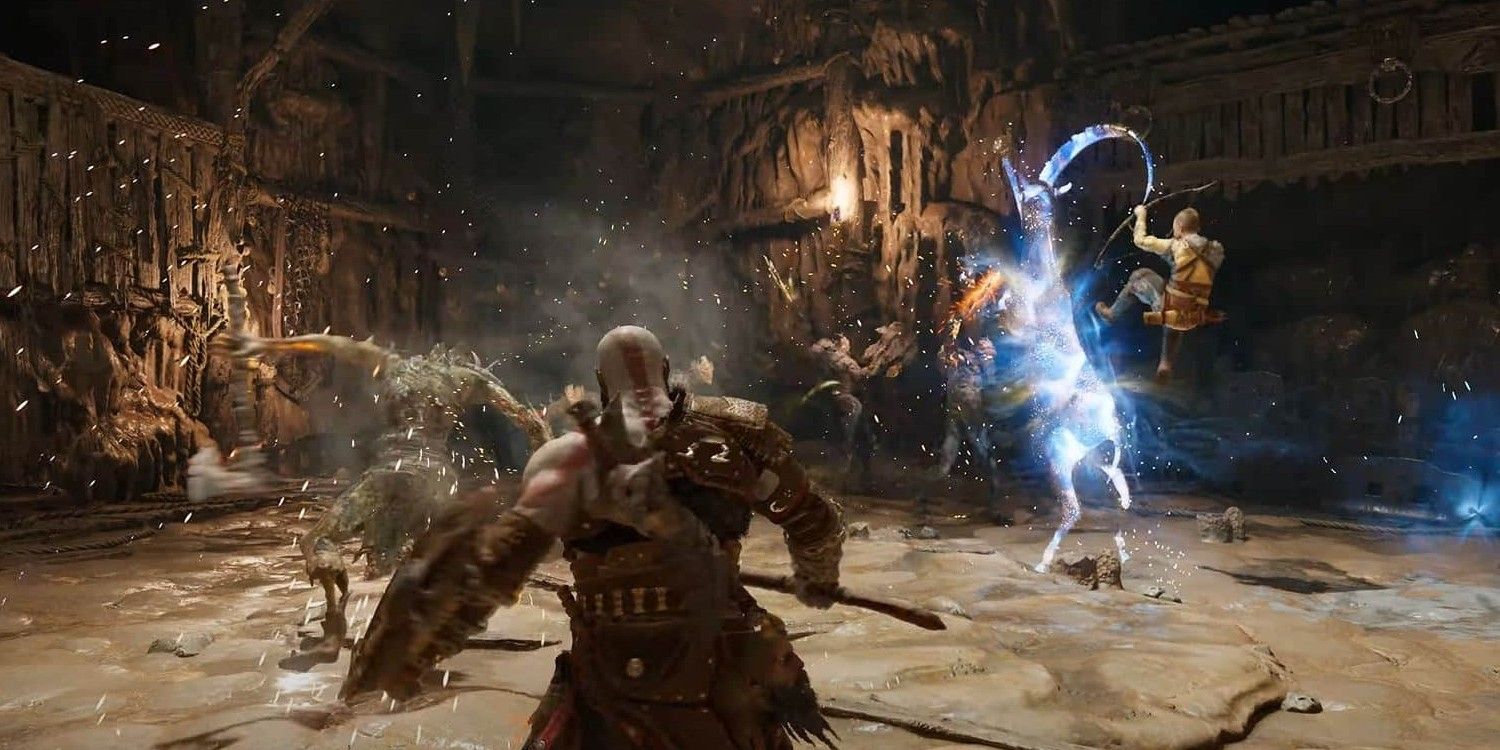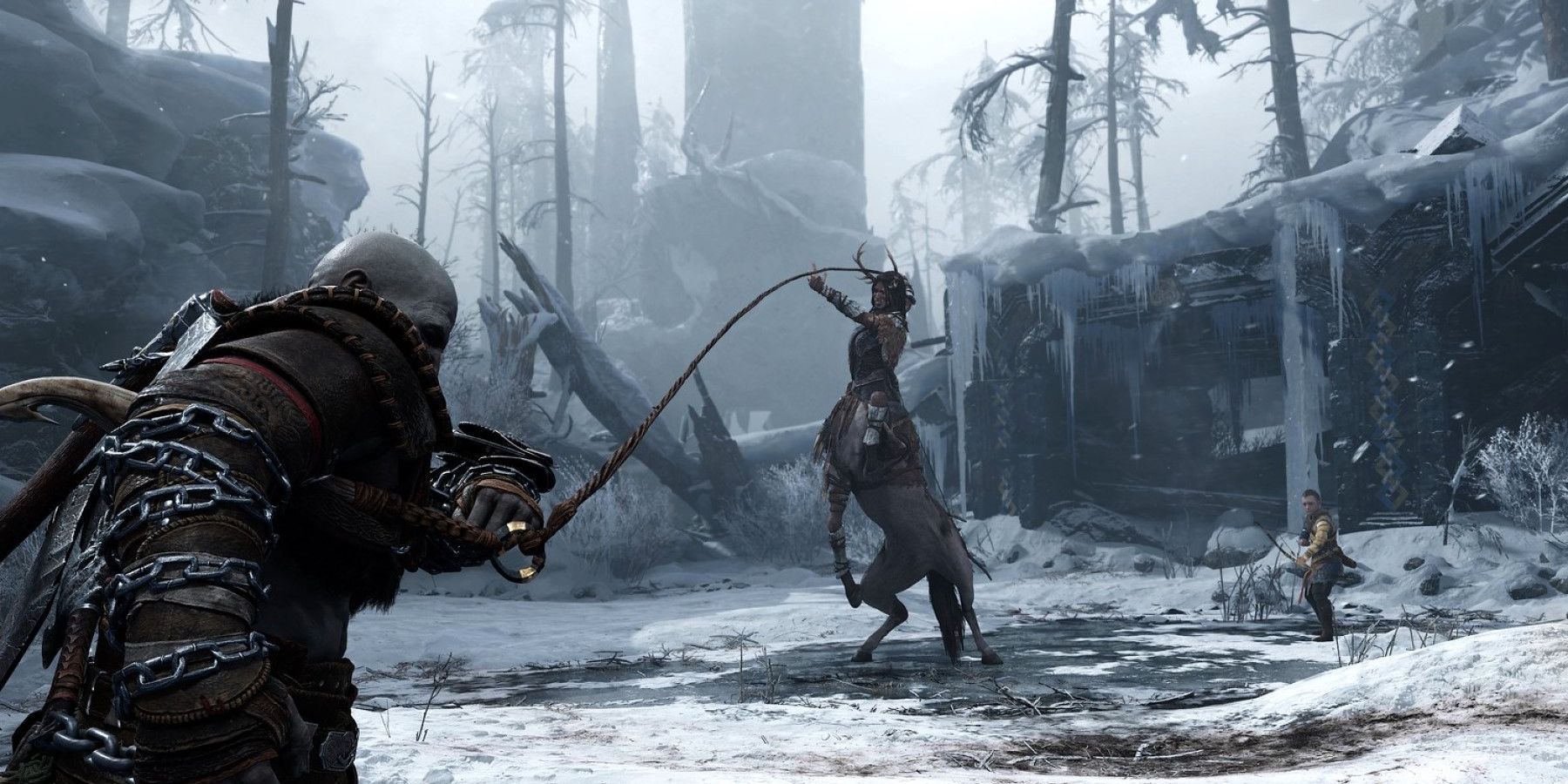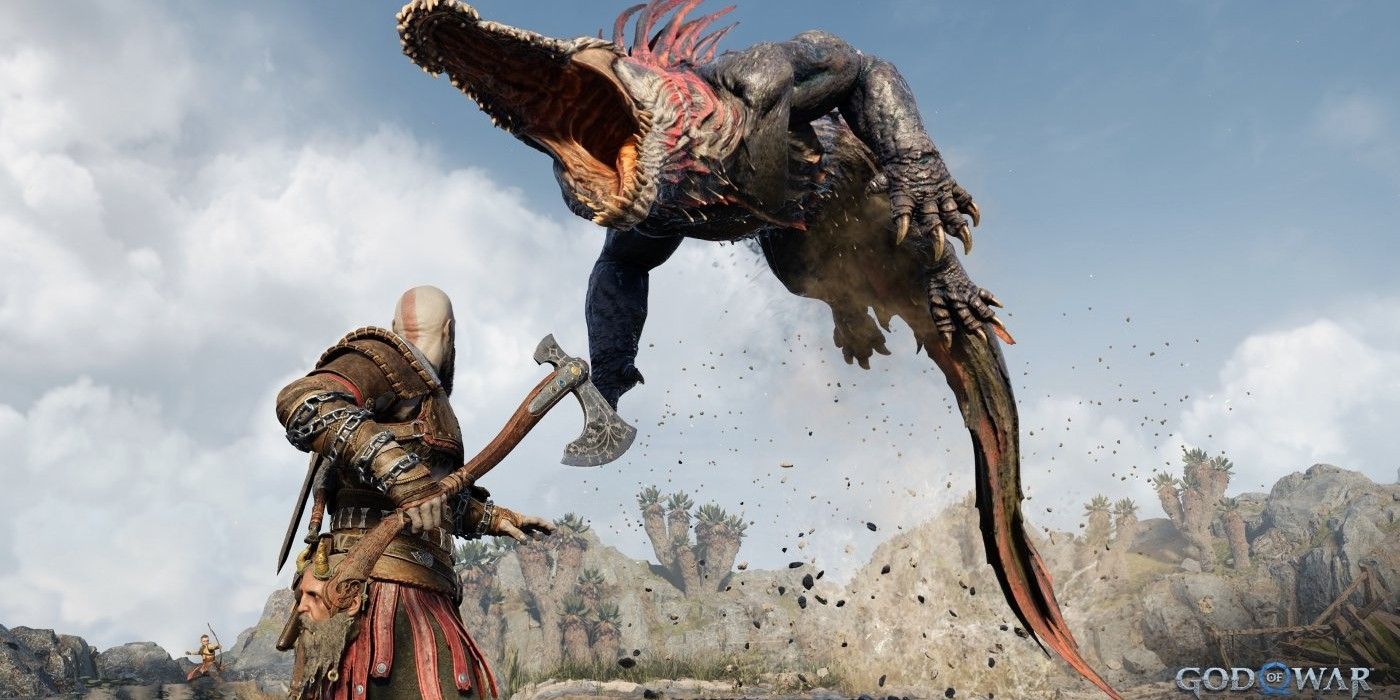God of War: Ragnarok will see Kratos and Atreus face off against new enemies from Norse legends, and knowing the stories behind them will make the game all the more thrilling. Though few are confirmed so far, each one that is has its own story in the pages of Norse lore, and an important part to play in the gods' final battle. Many Norse myths have been lost to time, but those that remain have inspired some of the enemies that the Ghost of Sparta and his son have faced in the 2018 God of War.
There are countless creatures and monsters from Norse mythology in God of War: Ragnarok, from giants to trolls to serpents that wrap around the world. They are mostly faithful to the legends that inspired them, with some modifications. Draugr were a common enemy in the first chapter of Kratos' Norse adventure, and they were essentially what the legends depict them as: lost souls rising up from Hel to prey upon the living. The new enemies appearing in Ragnarok will hopefully follow their example.
Aside from Draugr, there are four enemies confirmed to be in the next God of War. One of which, Light Elves, appeared in the 2018 installment, albeit not as an enemy. The other three are Berserkers, Stalkers, and Dreki. Each one is sure to be formidable in its own right, and fans eagerly await their chance to tear through them just as they have every other foe that's stood in Kratos' way so far. The mythical creatures of God of War: Ragnarok each have their own lore, and their own story to tell.
Light Elves Will Return In God Of War Ragnarok
The most familiar enemy to return in God of War: Ragnarok is the Light Elves. Inhabitants of Alfheim, known as Alfheimr or Ljosalfheimr in Norse legends, they are said to be more beautiful than the sun. The god Freyr, brother to Freya, is said to rule Alfheim, which he was given by the Aesir when he was a baby. The elves are said to have magical powers, such as the ability to heal humans or make them ill.
Although Kratos' interactions with Light Elves in 2018's God of War were mostly indirect, he still left his mark on their realm. In his efforts to reach Jotunheim and scatter his wife's ashes, Kratos saved Alfheim from its invaders, the Dark Elves before leaving without being acknowledged. It would appear, however, that in God of War: Ragnarok, Atreus and his father will have to face off against them.
What Are The Human Enemies In God Of War: Ragnarok
Berserkers in Norse mythology are human warriors who were said to fly into a trance-like rage on the field of battle. They charged into a fight without regard for their own well-being, causing chaos among enemies. They were said to be members of a religion that worshiped bears, and some stories say they wore bear skins, and were laid out on them before their funeral rites. Their relationship with bears even exists today, as members of the Danish royal guard wear bearskin caps. Some depict them as being able to shapeshift into bears, a concept which has been portrayed in other media.
Magic aside, in God of War: Ragnarok, Berserkers seem to be the blanket term for human or humanoid enemies. The trailer shows Kratos and Atreus exploring much more of civilization than the 2018 game, so it stands to reason that they'll be facing off against more humans than they did in their last Nordic journey. Whether or not they will be able to turn into bears is as of yet unconfirmed, but given the multitude of monsters that Kratos has torn through in his adventures, it is not outside the realm of possibility.
God Of War: Ragnarok's Stalker
The Stalker is perhaps the one confirmed enemy without a direct equivalent in Nordic mythology. God of War: Ragnarok's Stalker, or the Berserker Stag, appears to be a Centaur-like creatures with antlers, which don't appear in Norse myths. Kratos' homeland of Greece does contain centaurs, but none with antlers, and the Stalker in the trailer looks rather different from the centaurs that have appeared in past games. There is one horse-hybrid creature in Norse legend that may have been their inspiration, the Nuckelavee, but it is nightmarish and substantially different from the Stalker that appears in the trailer.
The Stalker in the trailer was shown to be female. She uses a long whip, or perhaps a grappling hook, to pull Kratos towards her. He is also shown punching her in the side, though she was able to escape his grip. From the trailer, the Stalker appears to be a nimble-footed enemy that relies on hit-and-run tactics and keeping Kratos off-balance. Tactics like this could be the end of Kratos and God of War: Ragnarok playthroughs everywhere. She has the potential to be a formidable enemy, as Kratos' typical power-focused combat style may match up poorly if this is the case.
God of War: Ragnarok Has A New Form Of Dragon
In the Old Norse language, Dreki is the word for Dragon. It is also a synonym for the wingless reptilian creature known as the lindwurm. Common stories depict them as having a long, serpent-like body, a draconic head, and two forelegs with sharp claws. They were said to slither across the ground like snakes and use their arms to propel themselves. Lindwurms were popular designs for shields and runestones in the 11th century, and ingesting their shed skins was said to greatly increase knowledge of medicine.
The Dreki in the trailer looks quite different from the legends of the lindwurm. It's clear that it's very strong and will be a tough battle for any player, from veterans to newcomers. In the God of War: Ragnarok Playstation Showcase, it picks Kratos up in its powerful jaws and, frankly, throws him around like a ragdoll. Its body is much shorter and stockier than a serpent, it has four legs, and its head looks closer to an alligator or crocodile's than a dragon's. Though Kratos has faced dragons before in the 2018 game, it's clear that this will be a new kind of enemy in God of War: Ragnarok, but one no less deadly.





